According provided by Flash YONGNUO Speedlite YN560 IV many thanks GearBest.
- In short
- Difference from YN560 III
- All Yongnuo Speedlite Flash
- Main Specifications
- Assembly
- TX mode
- RX mode
- S1 and S2 modes
- Multi mode
- Custom settings
- My experience
- Price
- Results
- User Comments
- Add your review or question on the lens
'YONGNUO Speedlite YN560 IV' will be abbreviated as 'YN560 IV' in this review.
In short
YN560 IV - popular budget external flash. The logical continuation of the previous model YN560III. It attracts with its low cost, built-in radio synchro for working in slave or master modes.
Mostly manual flash is used by amateur photographers as a very cheap alternative to original TTL automatic flashes, as well as by experienced users as remote flashes.
Important 1: This is a manual flash. Flash power must be set manually. Power is set as a fraction of the total power. So 1/1 means full / maximum flash power, and, for example, 1/32 means that only one thirty-second of the maximum power will be used.
Important 2: focal length (zoom) must be set manually. This can be a little embarrassing when shooting with a zoom lens. With a fixed lens, there are no particular problems with this inconvenience.
Important 3: this flash is not designed for any one system like Nikon or Canon. The YN560 IV can be used on all cameras that have a standard hot shoe with a center sync terminal.
Difference from YN560 III
The main difference between the YN560 IV and the previous model YN560III Now you can control other compatible flashes over the air.
Using compatible flash / radio sync flash YN560III could only be controlled remotely. This behavior of the flash is called slave mode, on flashes YN560III / YN560 IV is abbreviated RX ie Receiver - receiver (receiver) mode. FROMama on my own YN560III could not work as a master / control flash. This flash behavior is called master flash or MASTER flash and is abbreviated on the YN560 IV. TX ie Transmitter - transmitter (transmitter) mode.
As a result, the YN560 IV has a built-in radio transmitter that can work both as a receiver and as a transmitter.
YN560 IV can now partially replace the transmitter YN560-TX. The YN560 IV flash can only control up to three groups of remote flash units, while YN560-TX can control up to six led groups.
Also, the YN560 IV has slightly changed the control, instead of the 'GR' (group selection) function, the YN560 IV uses the 'ACT' (flash activation) function.
Initially, the YN560 III comes without a 'activation' band. But the YN560 IV from the box is already activated, i.e. in RX mode it already has a certain group set. To activate the YN560 III group (in RX mode) using the YN560 IV, you need to simultaneously press the buttons on the YN560 IV in TX mode located on the sides of the 'ACT' inscription and wait for synchronization between the YN560 IV and YN560 III. When the display of the YN560 III shows 'abracadabra', hold down the central button of the YN1 III joystick for 2-560 seconds, after which the YN560 III will be activated and included in the 'A' group. To work the YN560 III with synchronizers such as Yongnuo RF-602, RF-603, group activation is not required.
Well, it’s just a trifle: the modification number for the YN560 IV is painted on the body of the flash in blue and without a dash, and for the YN560 III - in black and with a dash.
UPDATE: in 2018, an update was released for the YN560 IV version, which received a USB port for updating the firmware.
All Yongnuo Speedlite Flash
Yongnuo has a huge, huge number of different flashes. Flashes differ in a set of functions. Conditionally, I divided them into automatic (with TTL support) and manual.
Yongnuo manual flashes (without TTL)
A distinctive feature of all these outbreaks is the presence of only one central sync contactallowing them to be used with any cameras that have the same center sync terminal for activating an external flash on their hot shoe. The hot shoe is where the external flash is attached to the camera.
- Yongnuo yn420, powerful portable studio flash with battery
- Yongnuo yn460, introduced in autumn 2009. First outbreak from Yongnuo
- Yongnuo yn462, the simplest manual flash from Yongnuo. Unlike YN460, it lacks S1 / S2 modes and diode power indicators. Swivel angle increased
- Yongnuo yn460-II, two subversions: with a metal or plastic foot, depending on the year of production. Guide number increased, PC connector removed, battery cover changed
- Yongnuo yn460-RXcomes with a radio synchronizer YN-460TX. Can work in TTL but only as a slave mode (when the flash is controlled remotely)
- Yongnuo yn560, a zoom from 24 to 105 mm appeared, a PC-connector and an additional power connector were added, a sound notification appeared, a head lock button
- Yongnuo yn560 IILCD display added
- Yongnuo yn510 EX, added TTL mode, but only for slave mode (when the flash is controlled remotely using light commands)
- Yongnuo yn560 EXadded TTL radio mode, but only for slave mode (when the flash is controlled remotely by radio)
- Yongnuo yn560III, added slave flash function over the air
- Yongnuo yn560IV, added the function of the leading flash over the air
- Yongnuo yn560LI, two lithium batteries instead of 4 AA batteries
- Yongnuo yn560 IV_2018, added the function of updating the firmware via USB, the rest is like YN560IV
- Yongnuo yn660, the number of groups for controlling other flashes has increased, the zoom has expanded to 200 mm, the controls and interface have been redesigned (similar to YN-685), the angle of rotation of the head is expanded
- Yongnuo yn860LIstarted using the Yongnuo YN-B1800 battery instead of two batteries (as in YN560LI), the function of updating the firmware via USB was added, the port for the external power supply was removed
- Yongnuo yn720started using a large battery Yongnuo YN-B2000
Usually manual flashes from Yongnuo end with a zero in their name-number (with the exception of YN500EX и YN462 ).
TTL flash Yongnuo (automatic)
Auto modes supported depending on model Canon E-TTL / E-TTL II, Nikon i-TTL, Sony TTL и Pentax P-TTL.
- Yongnuo yn320EX (Sony), TTL flash for Sony (multi-shoe), under 2 AA
- Yongnuo yn465 (Nikon / Canon), the first TTL flash
- Yongnuo yn467 (Nikon / Canon)
- Yongnuo yn467 II (Nikon)
- Yongnuo yn468 (Canon), two versions: with a metal or plastic foot depending on the year of production
- Yongnuo yn468 II (Nikon / Canon), improved battery compartment, added PC port
- Yongnuo yn500EX (Nikon / Canon), FP / HSS, CLS / Remote eTTL. Looks like YN568EX
- Yongnuo yn565EX (Nikon / Canon), no FP / HSS, CLS / remote eTTL
- Yongnuo yn565EXII (Canon)
- Yongnuo yn565EXIII (Nikon / Canon)
- Yongnuo yn568EX (Canon), FP / HSS, CLS / Remote eTTL
- Yongnuo yn568EXII (Nikon / Canon), added master flash mode for eTTL
- Yongnuo yn568EXIII (Nikon / Canon), added USB port for firmware
- Yongnuo yn585EX (Pentax), TTL without HSS
- Yongnuo yn600EXRT (Canon)
- Yongnuo yn600EX RT II (Canon), added master flash mode for eTTL
- Yongnuo yn650EX RF (Canon), with built-in radio syncronizer and constant LED light
- Yongnuo yn680EXRT (Canon), with built-in radio syncronizer compatible with Canon RT
- Yongnuo yn685 (Nikon / Canon), with built-in radio synchronizer, without optical traps
- Yongnuo yn685 II (Canon), with built-in radio syncronizer
- Yongnuo yn686EXRT (Nikon / Canon), uses a rechargeable battery, otherwise similar to YN600EX RTII
- yongnuo YN862C (Canon) uses a battery
- Yongnuo yn968EXRT (Canon)
- Yongnuo yn968N (Nikon), with built-in radio trigger, LED video light, Nikon CLS only as a slave
- yongnuo YN968NII (Nikon), with built-in radio syncronizer
- Yongnuo yn968C (Canon)
- Yongnuo Macro Flash YN14EX, ring flash for macro photography
- Yongnuo Macro Flash YN14EXII, ring flash for macro photography
- Yongnuo Macro Flash YN24EX, ring flash for macro photography
I will be glad to comment on the model range of these outbreaks, or separately on any of them.
Main technical characteristics of YONGNUO Speedlite YN560 IV
| Review Instance Name | YONGNUO DIGITAL Speedlite YN560 IV |
| Basic properties |
|
| Leading number | 58 (at ISO 100 and 105 mm) |
| Zoom | available zoom values: 24, 28, 35, 50, 70, 80, 105 mm |
| Tilt angles | 90 degrees up, 7 degrees down, 180 degrees to the left and 90 degrees to the right |
| Elements of a food | 4 batteries or AA nickel-manganese batteries (lithium batteries must not be used) |
| Colorful temperature | By 5600 |
| Pulse duration |
|
| Number of power setting levels | 8 main levels, for each of which (with the exception of 1/1), you can fine-tune +0.3, or +0.5, or +0.7 (depending on the step exposure: third of a step or half of a step, or combined, the step is set in the menu) |
| Разъемы |
|
| Extra food |
|
| Built-in radio synchronizer distance | 100 m |
| The weight | 350 g |
| Manufacturer country | MADE IN CHINA (Made in China) |
| Period | From 12 September to 2014 |
| Instructions | View (English only) |
| Price | Look at GearBest |
External flash nowadays it has a huge number of functions, capabilities and settings. You will find a lot of useful information on the topic 'why do I need an external flash at all' in my article here.
Assembly
YN560 IV came to me on a review completely new. Package Includes:
- Flash YN560 IV
- instructions in Chinese and English in the form of a small book. On the last page of the manual is a warranty card
- carrying case for storing and transporting the flash. Coffer closes with Velcro
- a mini-stand for flash, which is located in a special compartment coffer. The stand has a standard tripod socket on the bottom.
- coupon with the date of manufacture (the flash from the review was made on March 31, 2018)
- dehumidifier bag (located in the battery compartment of the flash)
- a warning ticket about using lithium batteries instead of batteries or nickel manganese batteries (located in the battery compartment of the flash, which is pretty smart)
- shipping bags and clamps
- box with a characteristic black and gold color (cosplay boxes from Nikon Speedlight?)
Externally, YN560 IV is very similar to Canon SpeedLite 580EX. Most likely the appearance of the lineup YN560 -> YN560II -> YN560III -> YN560 IV was copied from it. To the touch, the YN560 IV is similar to a large number of its siblings.
The flash head does not have a temporal button to lock its position. The flash head rotates 180 degrees to the left, 90 degrees to the right (total 270 degrees horizontal), 90 degrees up and 7 degrees down (total 97 degrees vertical) In the horizontal position, the rotation of the head occurs by clicks, 30 degrees per click. There are marks for 30, 60, 90, 120 and 150 degrees in one direction and 30, 60, 90 degrees in the other. In the vertical position, the rotation of the head also occurs with clicks; there are marks for 30, 45, 60 and 75 degrees.
The battery cover to the touch is quite reliable. You can quickly get used to the location of the batteries.
Take out the built-in white card reflector and diffuser very difficult. The protrusion for which you should pry and pull out the card is very small and uncomfortable.
The rubber plug that closes the PC-port and the connector for additional power supply is inconvenient; efforts and time should be made to fix it properly after opening.
When you change the focal length, the flash emits characteristic noise from electric drive.
To fix the flash, use clamping disc instead of a lever. This reduces the speed and convenience of attaching / detaching the flash to a camera or stand, and may also cause the flash to jam in the hot shoe. There is a drawn arrow next to the disc that says 'LOCK'. If the disc is jammed, then by this arrow you can easily navigate in which direction the disc should be rotated to remove the flash.
TX mode
In this mode, the YN560 IV functions as a master flash. Three groups of compatible flash units, such as Yongnuo YN560 III and Yongnuo YN560 IV. 16 independent channels are supported for convenient operation with a large number of flashes, which is especially important during the work of several photographers with the same flash / sync.
For remote flash units, you can set:
- zoom position
- operating mode M with a given power from 1/1 to 1/128
- Multi operating mode with a given power from 1/4 to 1/128, a frequency of 1 to 100 hertz and a number of repetitions from 1 to 100
- operating mode - i.e. turn off one of the flash groups, which can be useful when shooting with different light patterns
Slave flash setting method not obvious at firstbut you can quickly figure it out. Parameters on remote flash units change almost instantly.
- transition between controlled groups is carried out by pressing the central button of the joystick on the YN560 IV
- parameters of the YN560 IV in TX mode are adjusted when the flash group is set to 'GR -'
Unfortunately, the YN560 IV cannot be configured so that during shooting it will not work, and will only play the role of the control module, but you can set the minimum power to 1/128 and thus approach the desired result.
Important: If the master flash unit is attached to a camera or synchronizer, and the slave flash output is changed manually, the slave flash will fire at the manual flash output, not the one set on the master flash unit. To synchronize the parameters, press the 'PILOT' test firing button on the master flash unit. At the same time, the test firing button has a small lag, which allows transferring the shooting parameters to the slave flash.
RX mode
In this mode, the YN560 IV functions as a slave flash, and can be controlled remotely using radio synchronizers. Yongnuo RF-602, RF-603, RF-603II, RF-605, YN560-TX or other flash YN560 IV. Perhaps in the future there will be some other compatible devices.
To use the radio-controlled flash function, you need to use the button with the lightning icon to select the mode with the flash icon and the inscription RX, which means that the flash will work as a receiver. After that, you need to set the channel, which must correspond to the channel on the transmitter (including the YN560 IV).
In RX mode, a red diode blinks in front of the flash, which indicates that the flash is in remote control mode. For the flash to work correctly in RX mode, you need to select the desired transmitter in the flash menu, the function 'rf 60 2' is responsible for this, which can take the values '2' or '3' depending on the transmitter RF-602 or RF-603.
In addition, you can set up a sound notification about the triggering and successful recharging of the flash, as well as the time to enter sleep mode and the time when the power is completely turned off to save power.
S1 and S2 modes
In S1 and S2 modes, the flash output is also set manually, from 1/128 to 1/1 (full) with the possibility of correction to +0.3, +0.5 or +0.7 steps (depending on settings).
With S1 mode The YN560 IV can be ignited by the first light pulse from the master flash. This is a very simple and effective light trap mode.
In S2 mode the flash is ignited without any problems on the second pulse of the leading flash. This is a very convenient mode when the master flash master is in TTL auto mode.
In fact, S2 mode also works great not only on the second pulse, but by any last impulse from the master flash (the so-called PRE-flash Cancel Mode, pre-flash cancel mode). This is very useful when the master flash additionally controls a large number of groups of external flashes, creating many auxiliary command light pulses. YN560 IV burns perfectly in S2 mode from my Nikon master flash SB-900, which remotely controls three more different flash groups in TTL mode and works in TTL mode itself.
In modes S1 and S2, a single red indicator blinks on the front of the flash to indicate that the flash is in remote control mode and is ready for use. You can additionally turn on a sound signal that will notify you of a successful recharge after each YN560 IV operation in S1 and S2 modes.
Important: the light trap, which is responsible for receiving command pulses, is located on the front panel of the YN560 IV. In modes S1 and S2, the flash must be placed so that it easily picks up the command pulse of the master flash master or command unit. This is easy to do, as the flash head rotates and you can always point it in the right direction.
Important: the light trap also responds to infrared light, which is used by some command devices.
Multi mode
The mode is selected with the 'Mode' button.
In this mode, you can set a multiple flash (strobe mode). You can select the power of each individual pulse from the set: 1/4, 1/8, 1/16, 1/32, 1/128.
To select the number of impulses and their frequency, hold down the central button of the joystick for a while (in the instructions this button is called the 'OK' button). For a minimum power of 1/128, a maximum of 40 pulses at 100 hertz can be selected, or 100 pulses at 1 hertz. For a maximum power of 1/4, you can select up to 7 pulses at 1 hertz or 2 pulses at 10 to 100 hertz. Various combinations are possible depending on the number of pulses and / or frequency.
What can this mode be used for? I have described here.
Custom settings
To enter the user settings menu, simultaneously press two buttons between which an arrow and the inscription 'FN' are drawn.
- Gc ab c - selection of the number of groups for remote control. You can set 1 (A), 2 (Ab) or 3 (Ab c) groups. This function can help save time when setting up remote flash groups. Can only be configured when TX mode is on
- SL EP on / - - enable or disable power saving mode (sleep)
- SE of 3 30 - waiting time before entering sleep and shutdown mode in minutes for modes 'M' and 'Multi'. Can be selected in pairs: 3/30, 15/60, 30/120, - / 120
- Sd 60 - waiting time before shutdown in minutes for modes S1, S2. You can choose 30, 60 or 120 minutes
- Sd 5 30 - waiting time before entering sleep and shutdown mode in minutes for 'RX' mode. Can be selected in pairs: 5/30, 15/60, 30/120, - / 120
- LCD - display backlight activation time. Choose from 7, 15 or 30 seconds
- So nd on - enable or disable the sound signal. The same function can be activated by holding down the button with the drawn light bulb / note icon
- inc - sets the power correction step. You can choose 0.3 or 0.5 or combined type
- quic - sets the method for turning off the flash by long or short pressing the shutdown button
- RF 60 2 - choice of work with RF-602 or RF-603 synchronizer
- CL-EA - reset. To execute, hold down the central button of the joystick
My experience
I worked with the YN560 IV for about a week, used it with good rechargeable batteries Panasonic eneloop AA 1900mAhthat charged using La Crosse BC1000. The full recharge time at a pulse power of 1/1 is about two seconds.
At the time of writing this review, I was very very surprised by the fact that in just 10 years, Yongnuo has created almost fifty flash models! It’s not so easy to build some adequate picture of what is happening among the Yongnuo outbreaks (see the section at the beginning of the review).
Also, when preparing this particular review, I discovered unusual fact... Over the past 10 years, I have changed a lot of photographic equipment, the only thing I still use is my brave and experienced Nikon Speedlight SB-900, which ran at least a million shots and continues to delight me. Of course, the YN560 IV cannot be compared with a professional SB-900but still looking at all my battle injuries SB-900 I can say with confidence that not one YN560 IV will survive what she saw SB-900... Also, I want to note that a few more of my additional METZ flashes quickly deteriorated from frequent use. The main problems are the breakdown of the battery compartment, the zoom wedge, the melting of the diffuser, the failure of the main lamp, the breakage of the shoe.
YN560 IV is a simple and pleasant flash, you can get a lot of functionality from it, if you approach its use wisely.
The entire series of flashes YN560-I-II-III-IV considered successful enough among strobists, and on aliexpress YN560 IV they sell packs sets of 3-4 items (one controls three more).
Nikon, for example, does not have modern manual flashes, and automatic TTL flashes such as SB-700are significantly more expensive. For example, the same SB-700 costs 4 times more expensive than YN560 IV. As a result, users who do not need TTL modes, there is no point in creating a lighting kit based on the original flashes. Manual flashes, such as the YN560 IV, cope with this task with a bang.
Prices
It is the flash instance that is shown here in the review that came with GearBest. This flash is very easy to buy. at this link.
Results
YN560 IV is a simple and functional manual flash. The main feature is the built-in radio synchronizer, which works as a transmitter and a receiver. The range of YN560 IV applications is very wide.
Advantages
- low cost (at GearBest costs about 70 dollars)
- carrying case and foot (mini stand) included
- convenient set of focal lengths for zoom (from 24 to 105 mm)
- high enough power
- the flash can be remotely controlled using a radio synchronizer built into other flash units Yongnuo YN560 III and Yongnuo YN560 IV (and other compatible), as well as using radio synchronizers Yongnuo RF-602, RF-603, RF-603II, RF-605, YN560-TX (and other compatible)
- flash can remotely control other flashes Yongnuo YN560 III and Yongnuo YN560 IV (and other compatible) using the built-in radio synchronizer. 3 independent flash groups are supported. Remotely set power, zoom, and remote flash mode
- the flash can be activated remotely using the built-in light trap
- second curtain synchronization support
- support for strobe mode (Multi mode)
- customizable beep, convenient when using the flash remotely
- customizable sleep and auto shutdown modes
- indicator light on the front of the flash
- integrated reflector card
- built-in wide-angle diffuser
- overheating alert (I could not determine how it works)
- PC-sync connector
- large monochrome backlit display
- simple and intuitive controls
- several user settings
- external power support
Disadvantages
- a clamping disk is used instead of a lever to fix the flash
- manual flash setting only
- manual zoom only
- no high speed sync support
- no battery indicator
- unknown flash survivability and little information on official service centers
- the absence of a large number of small useful trifles characteristic of the original outbreaks (it makes no sense to list them all)
Material prepared Arkady Shapoval. Training/Consultations | Youtube | Facebook | Instagram | Twitter | Telegram

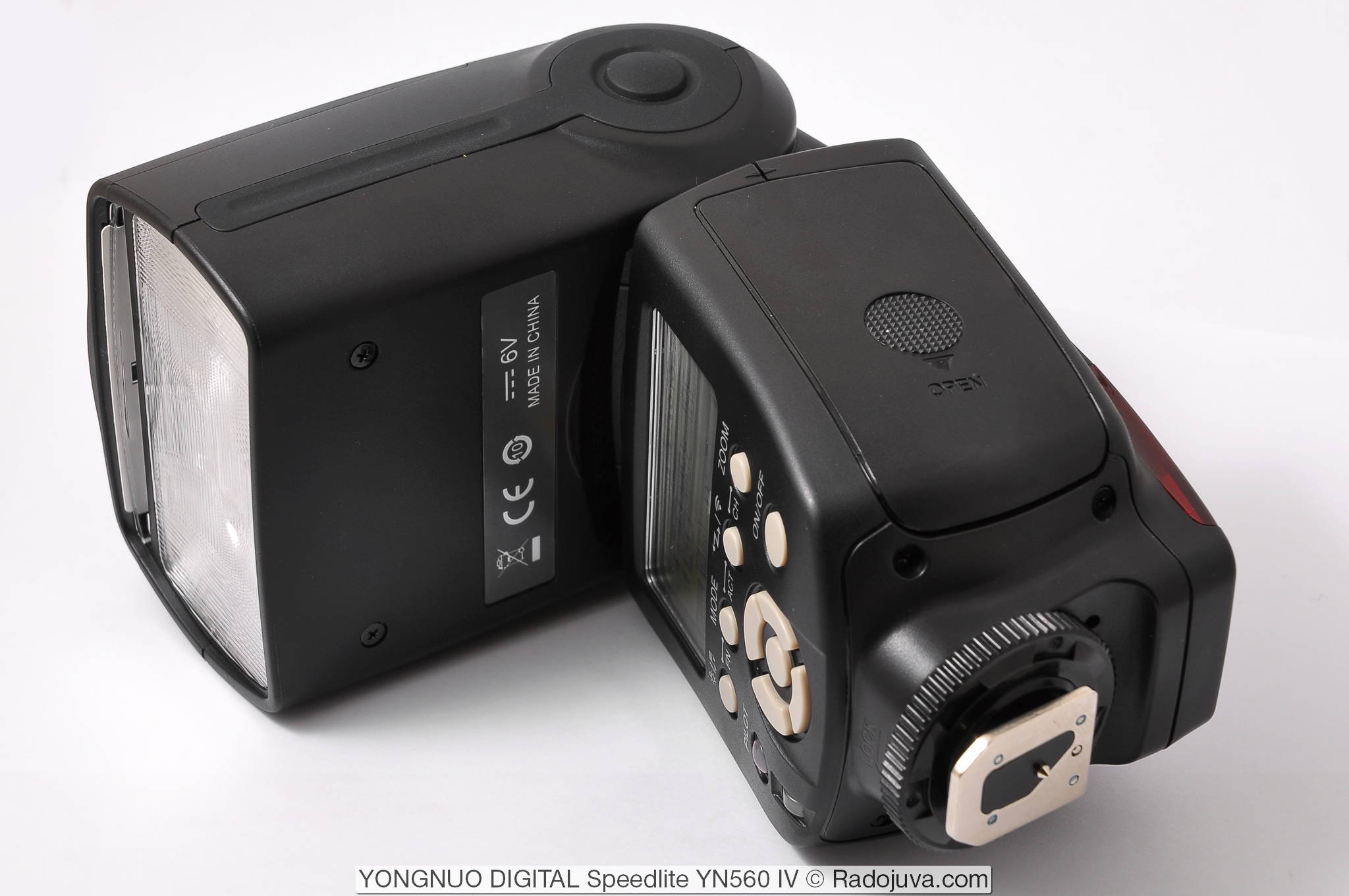
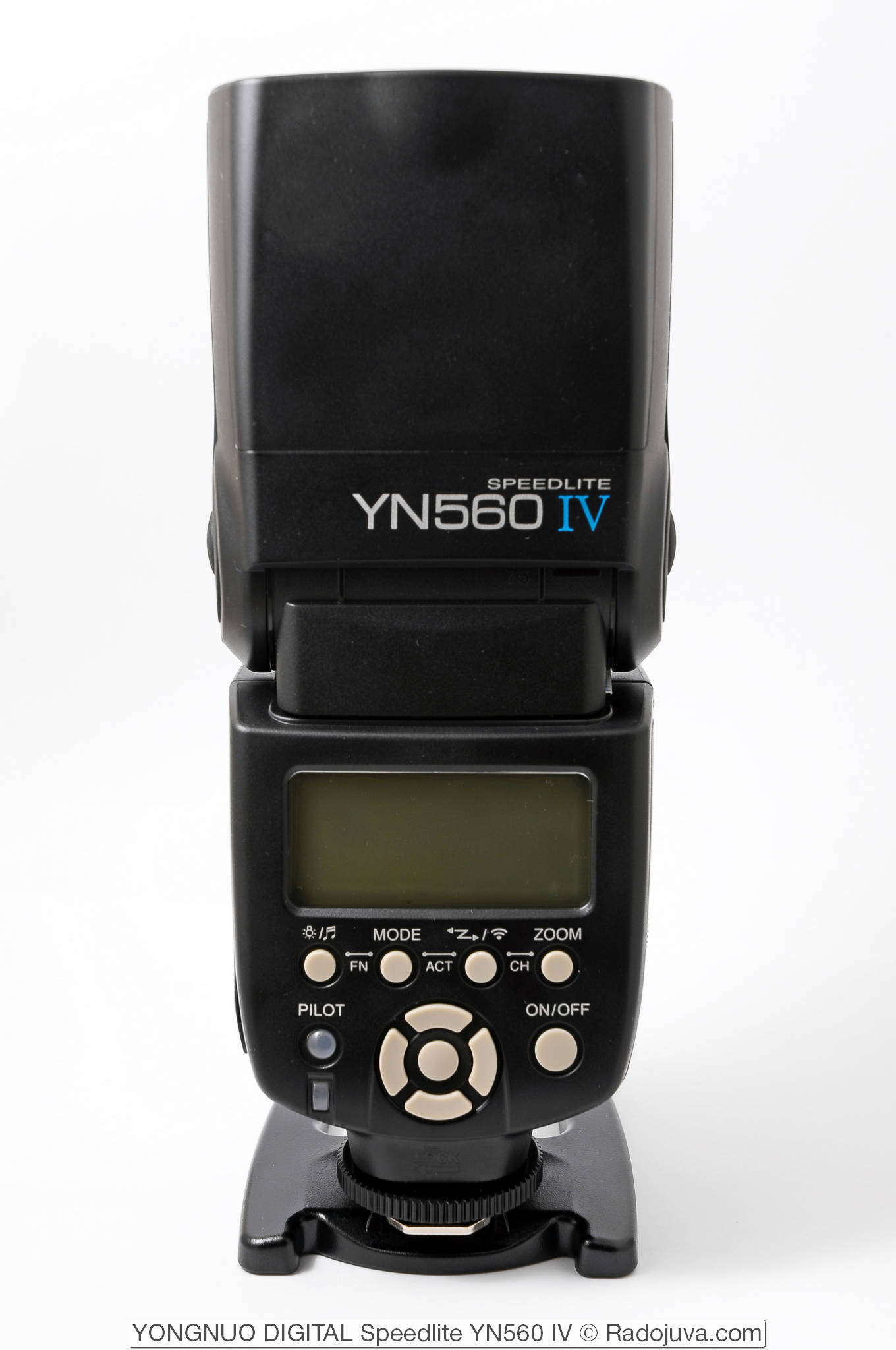
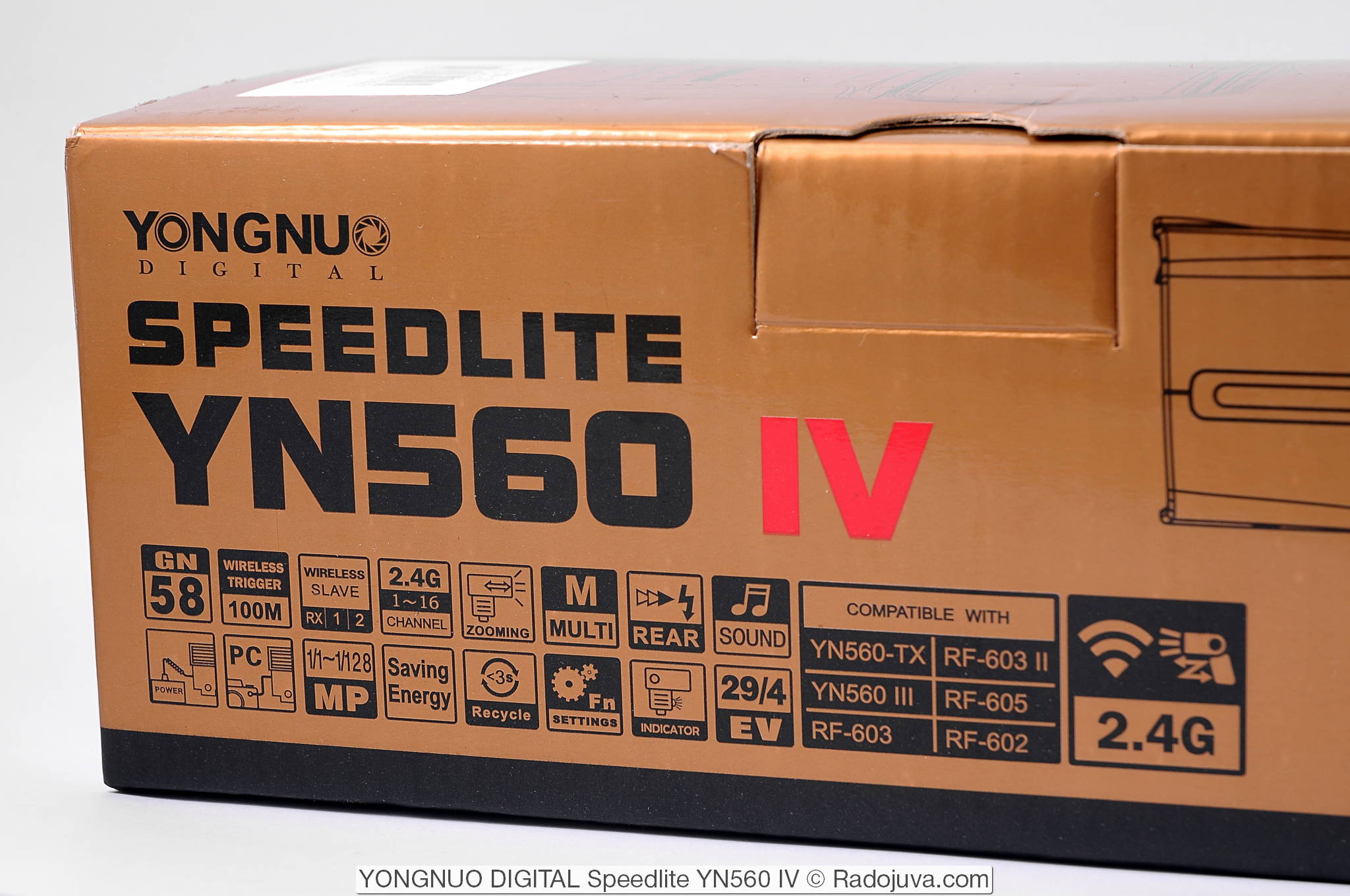
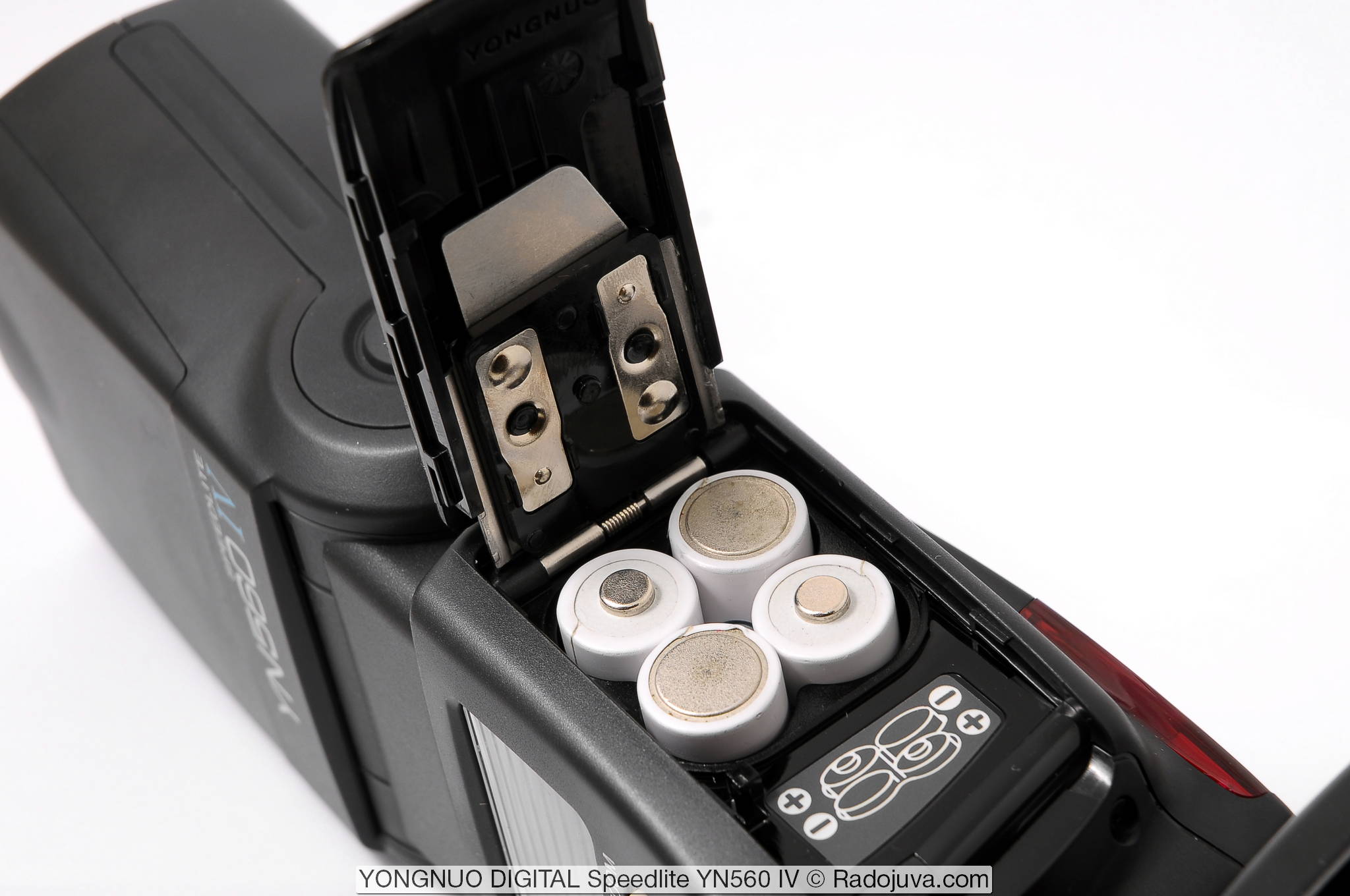
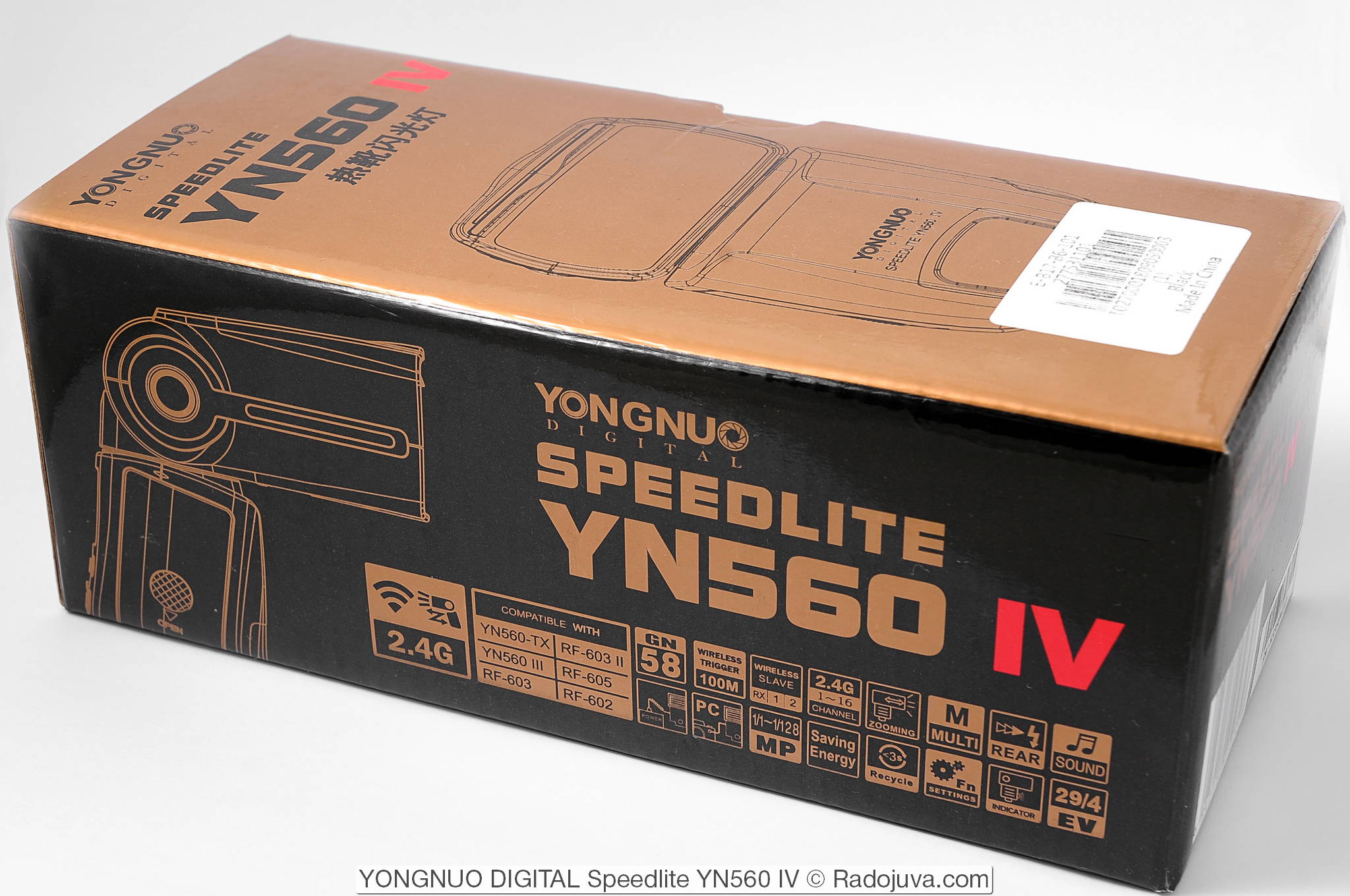
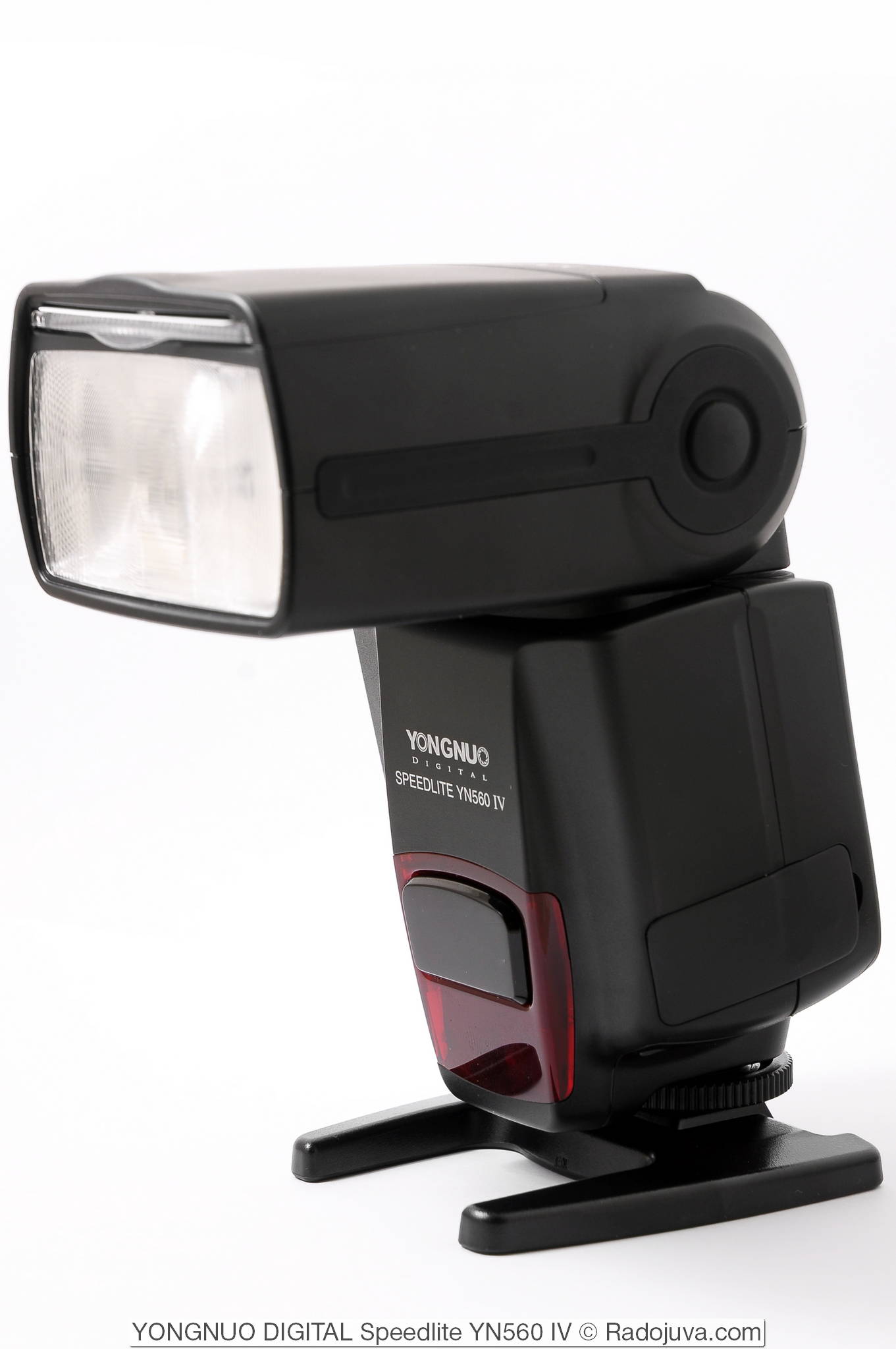
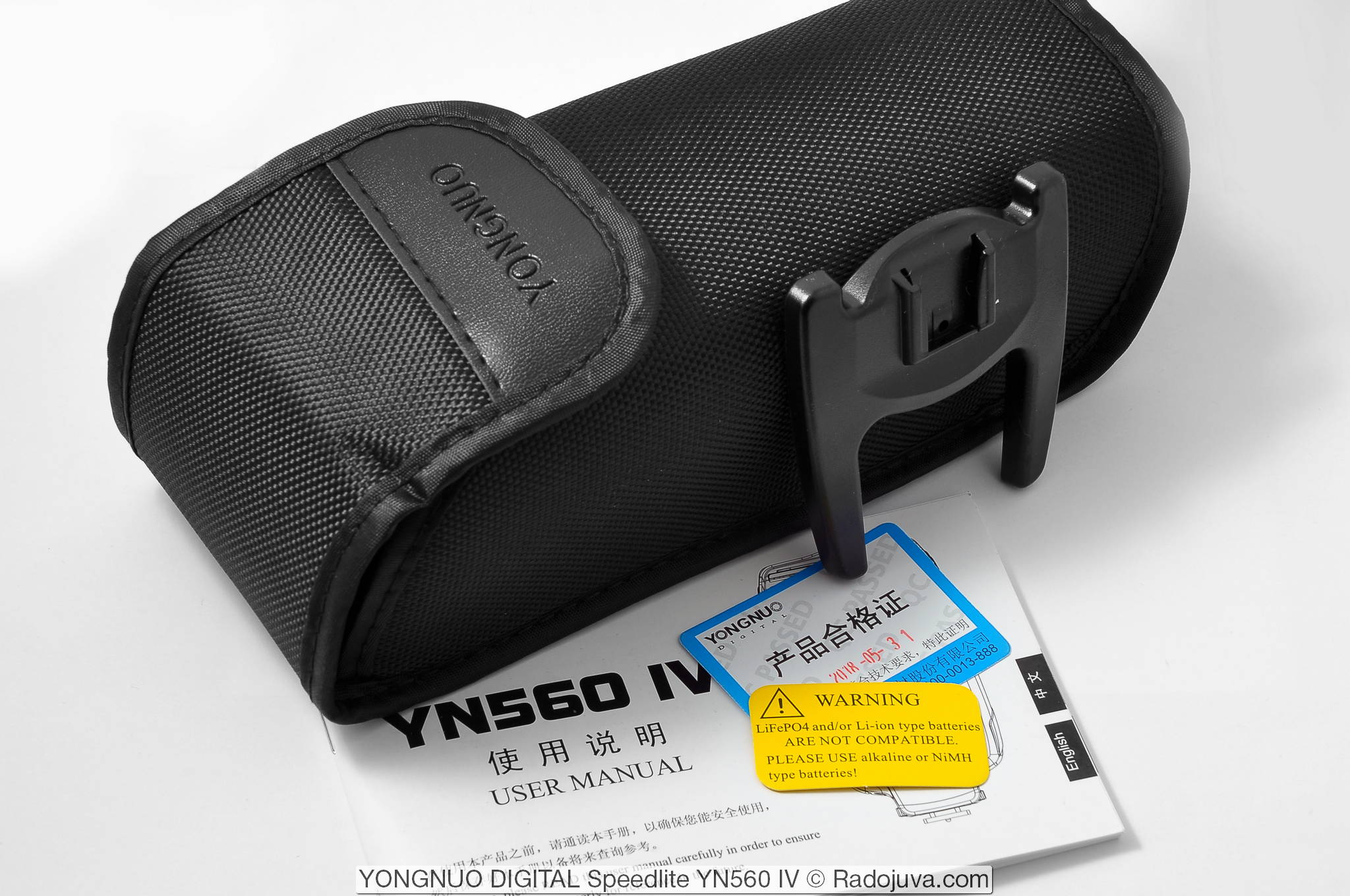
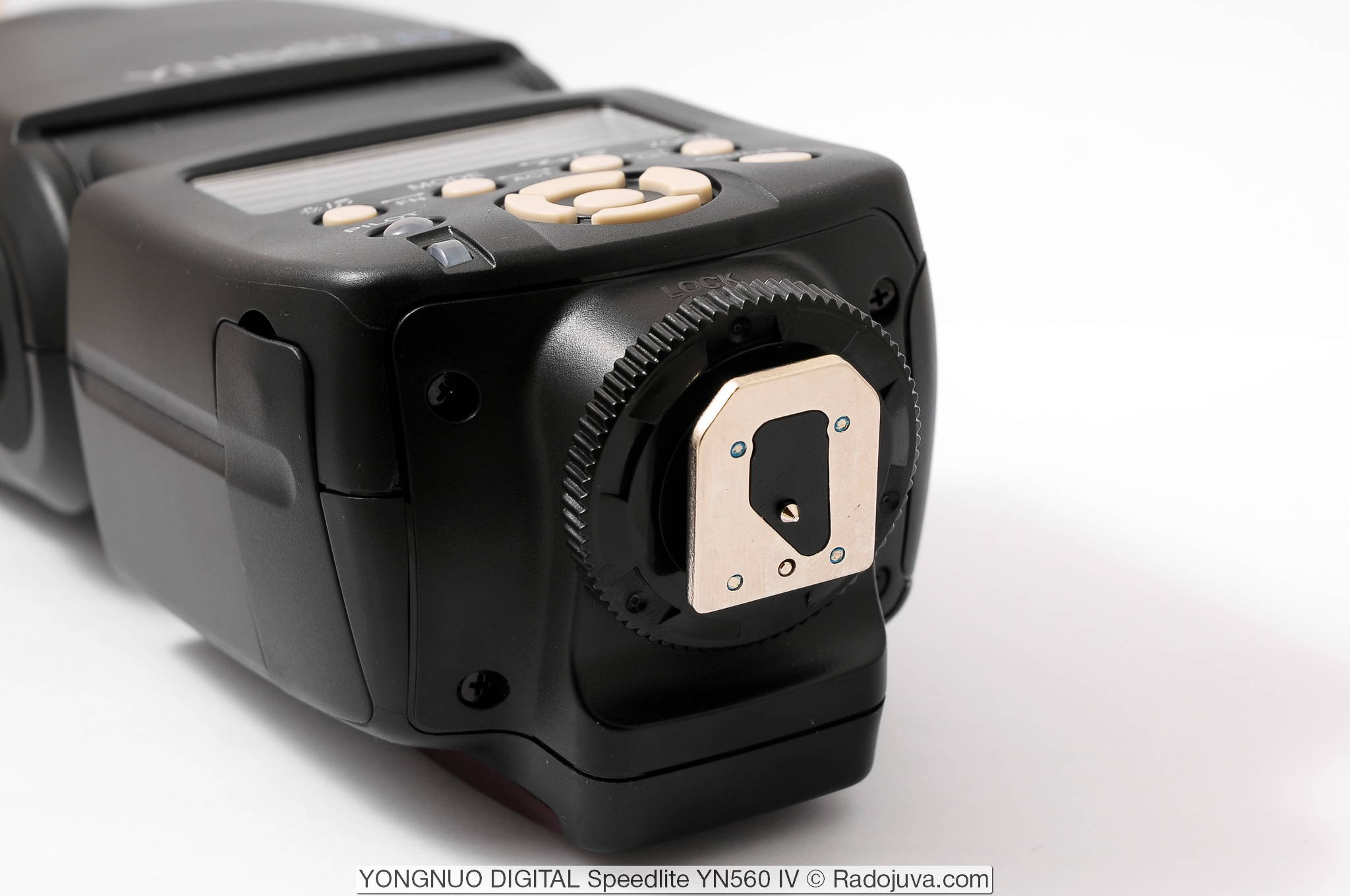
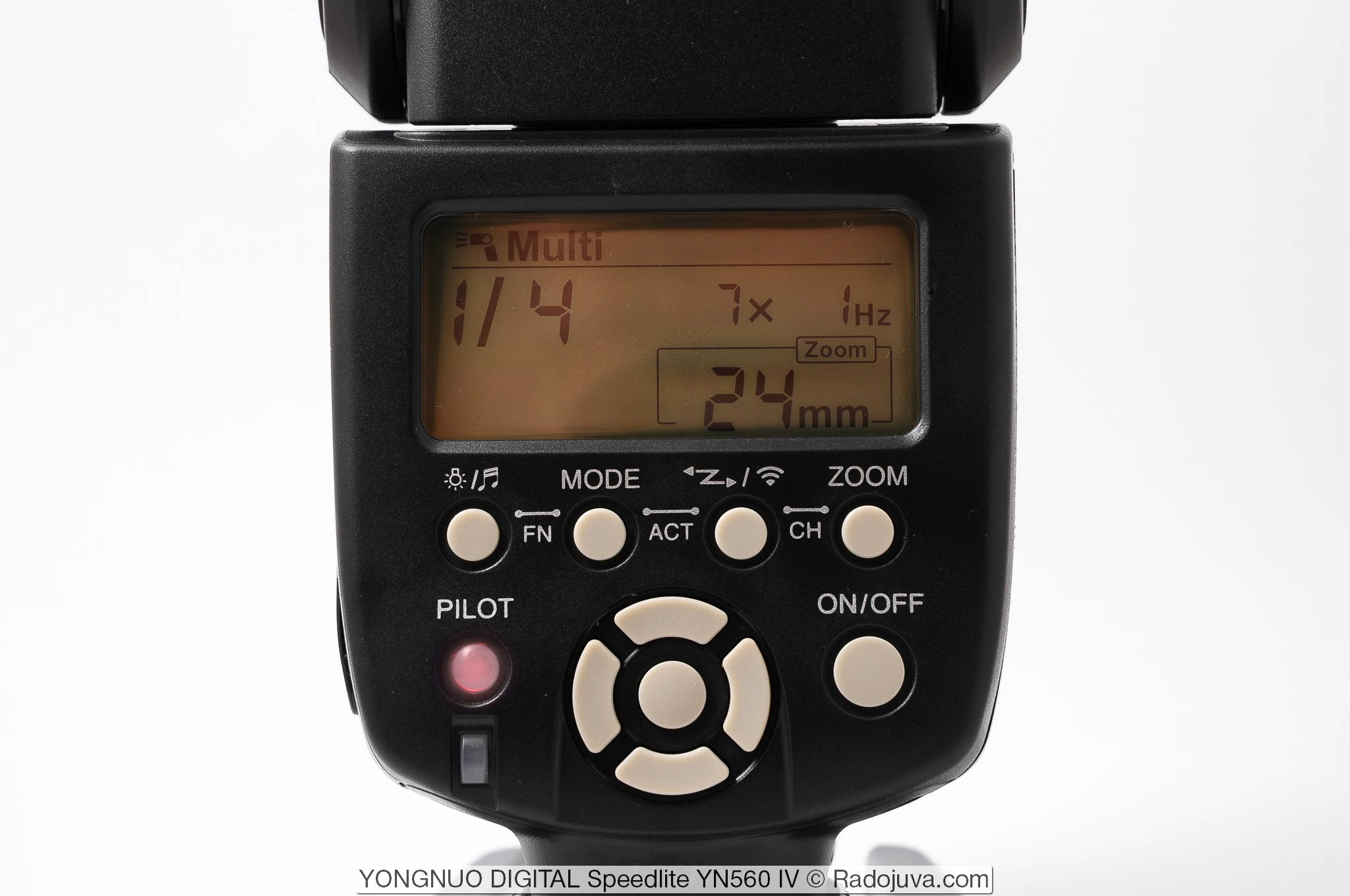
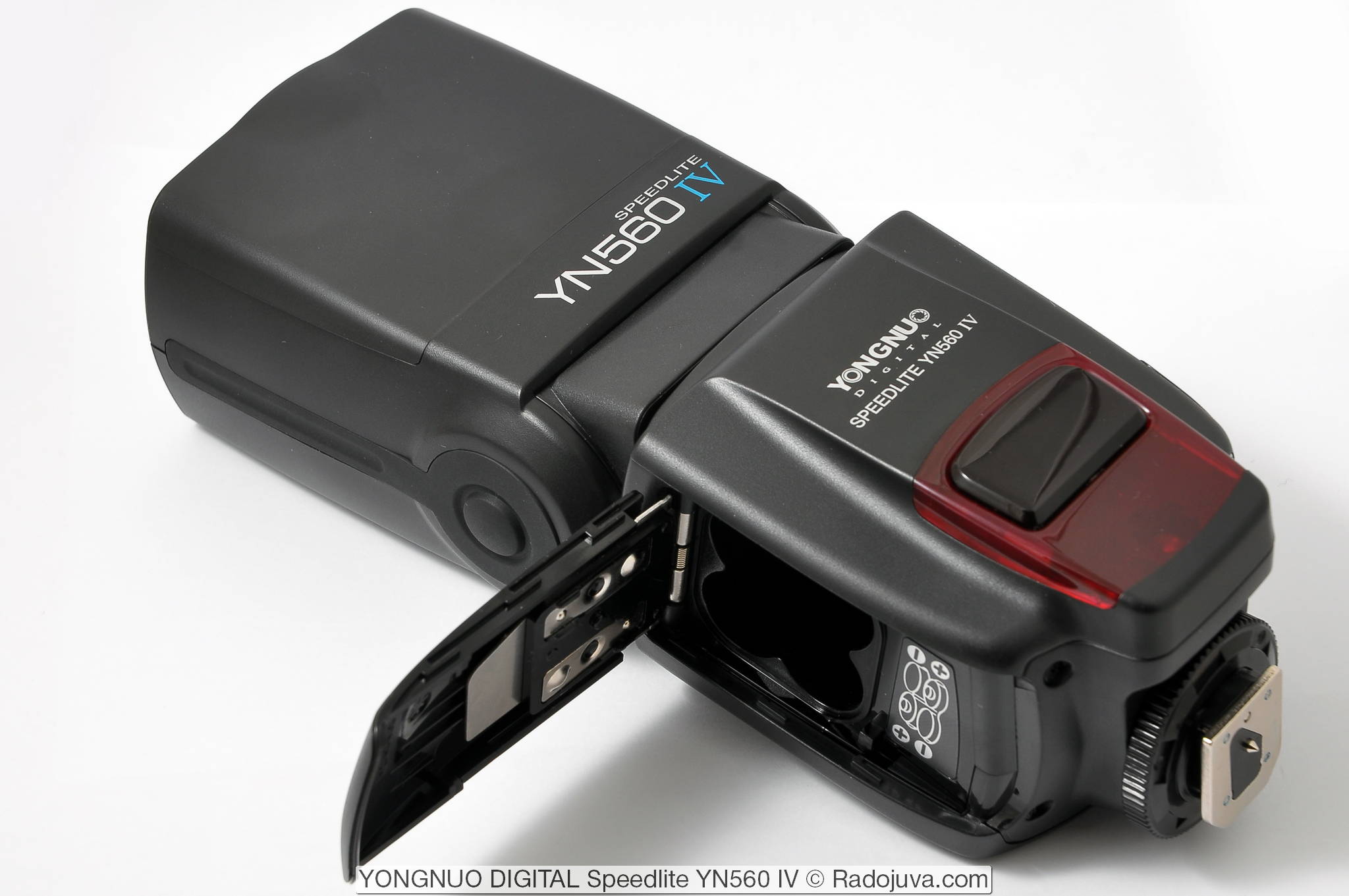
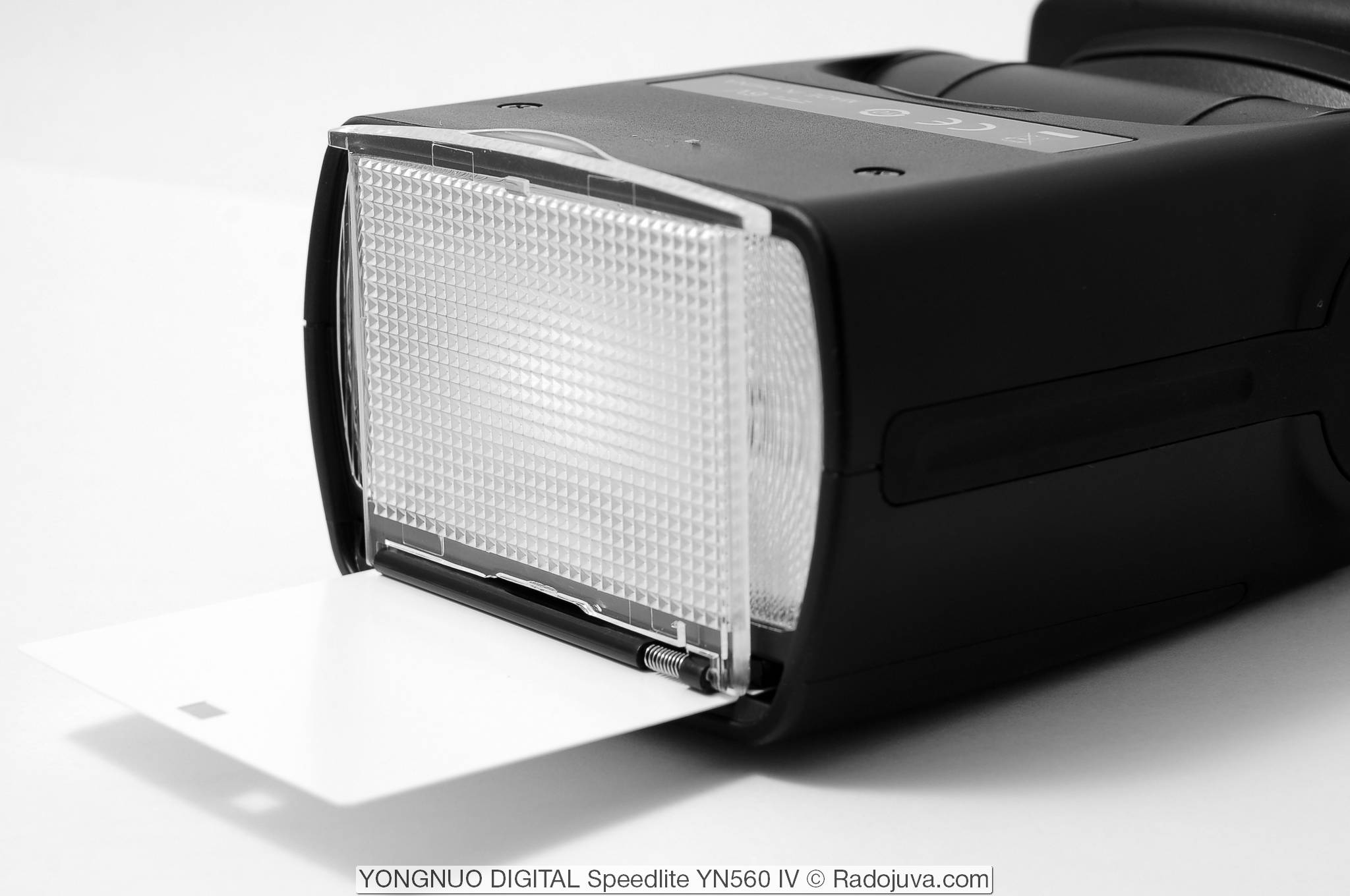
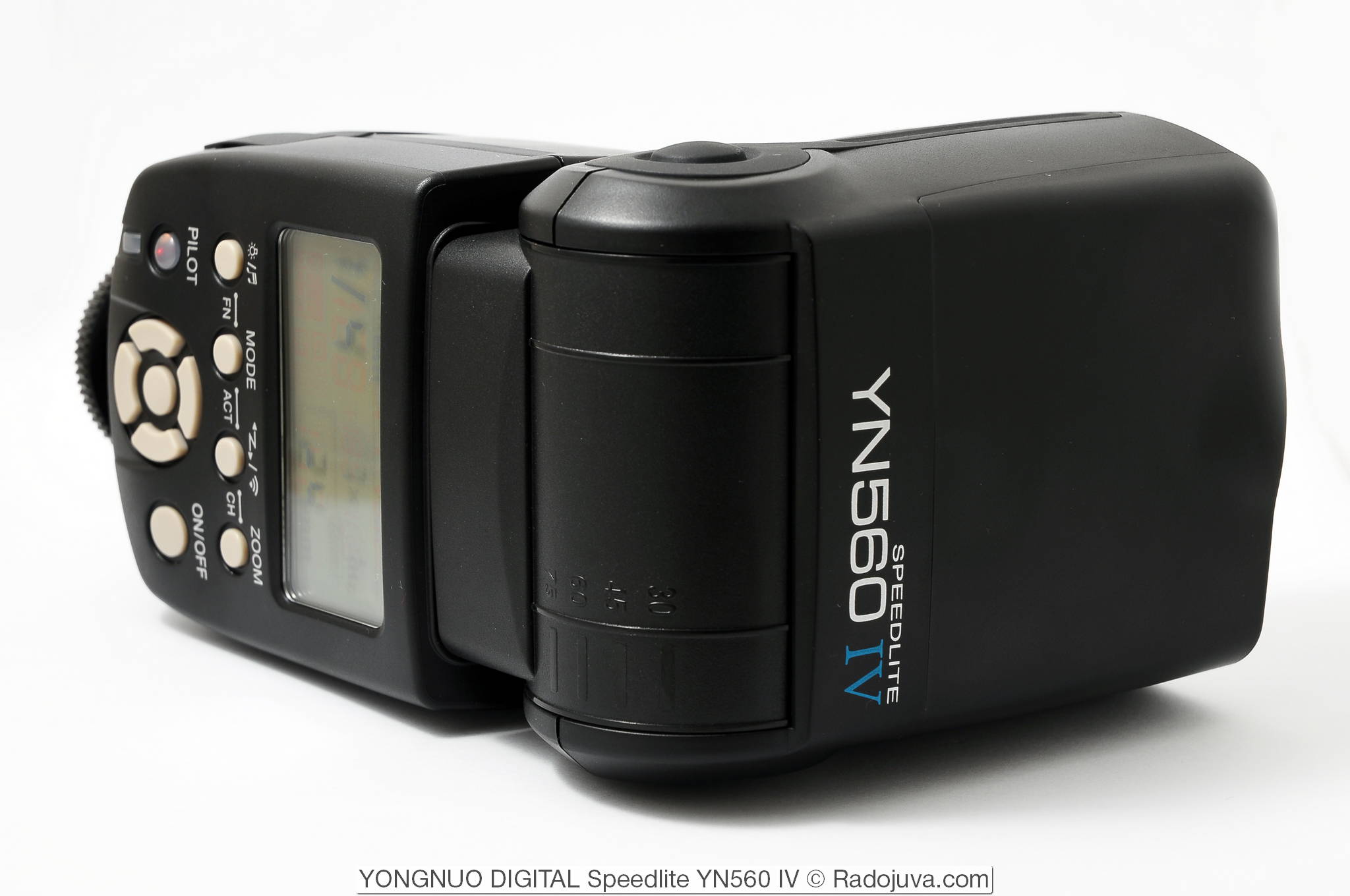
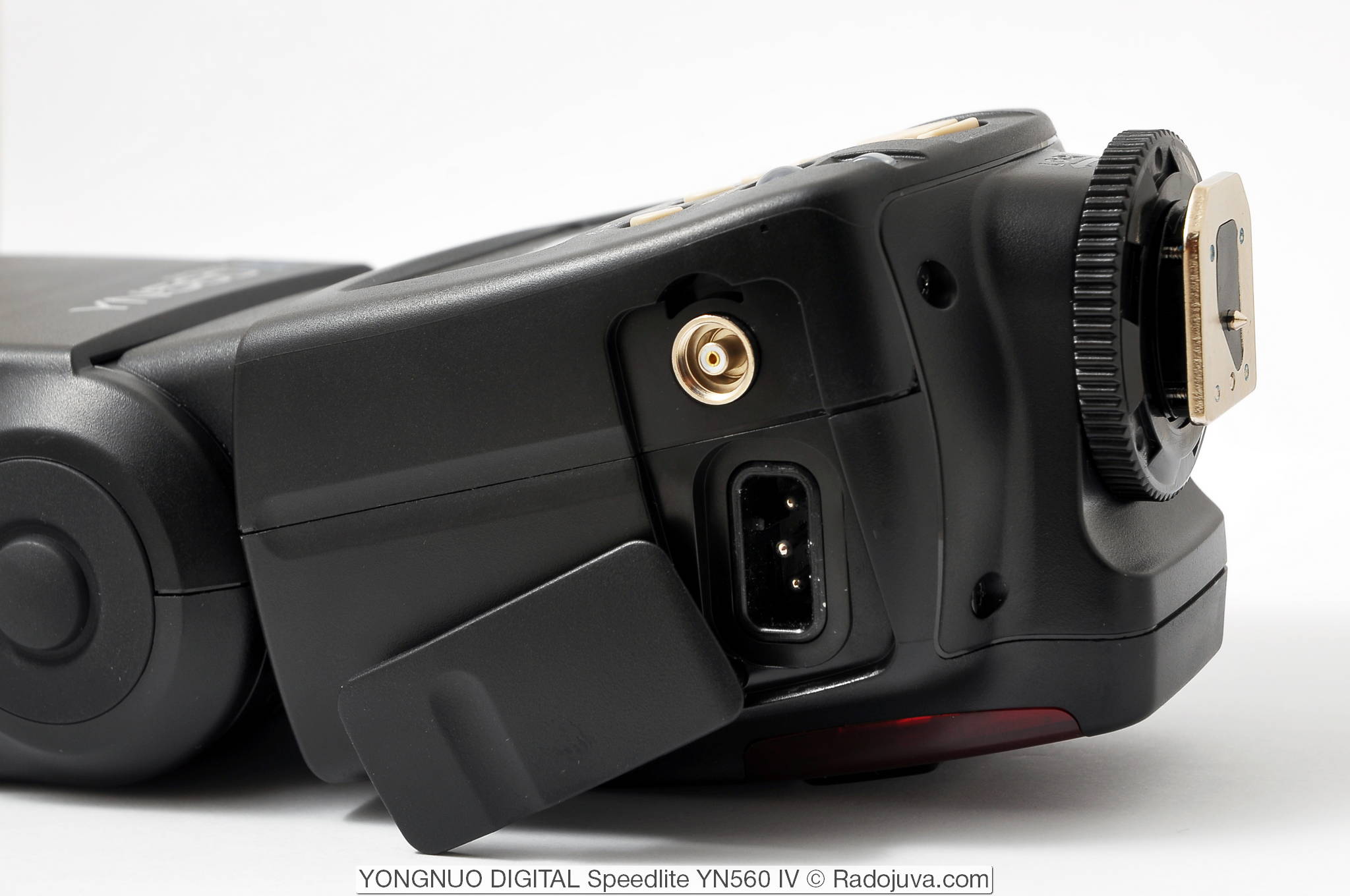
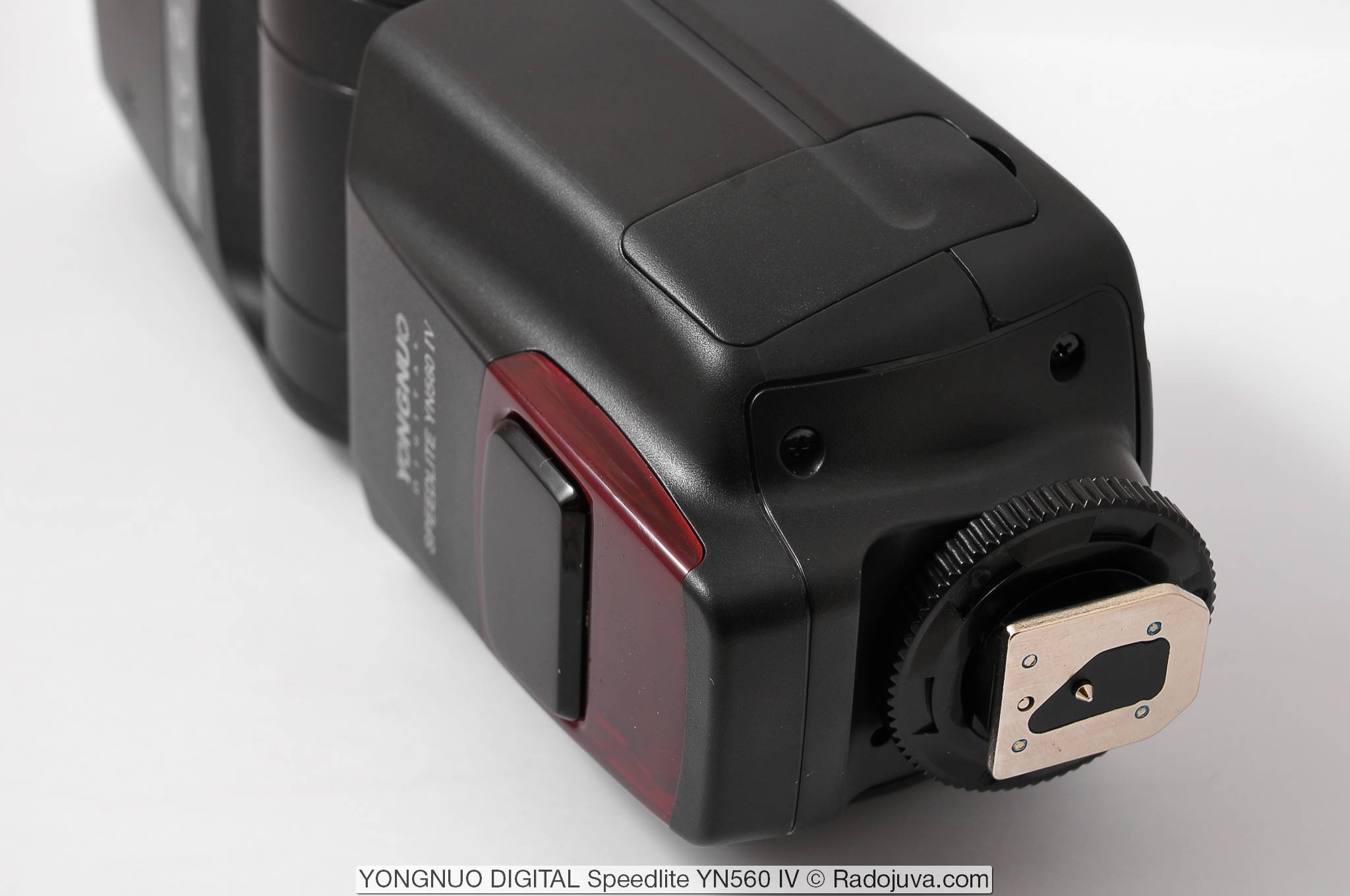
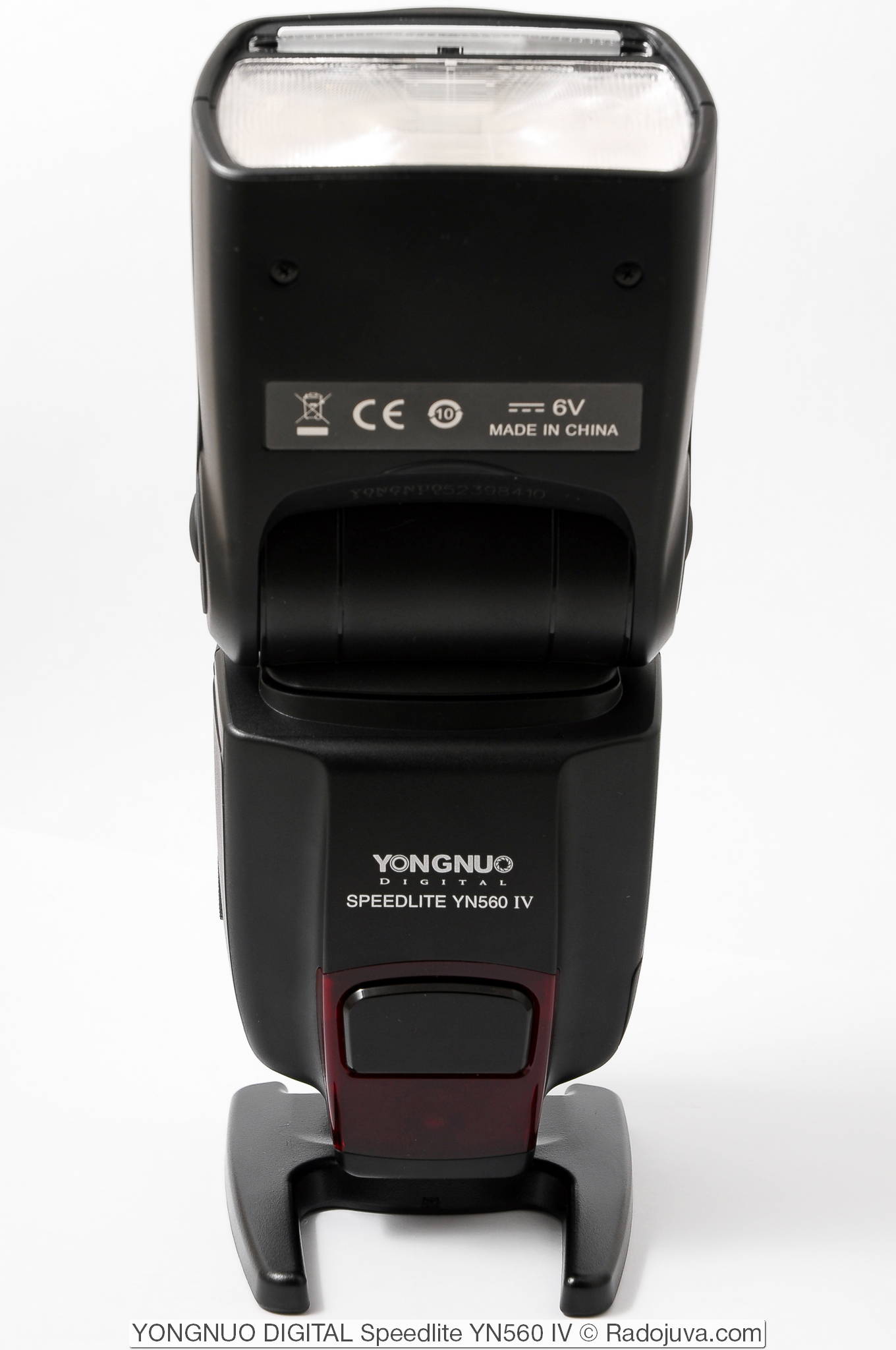
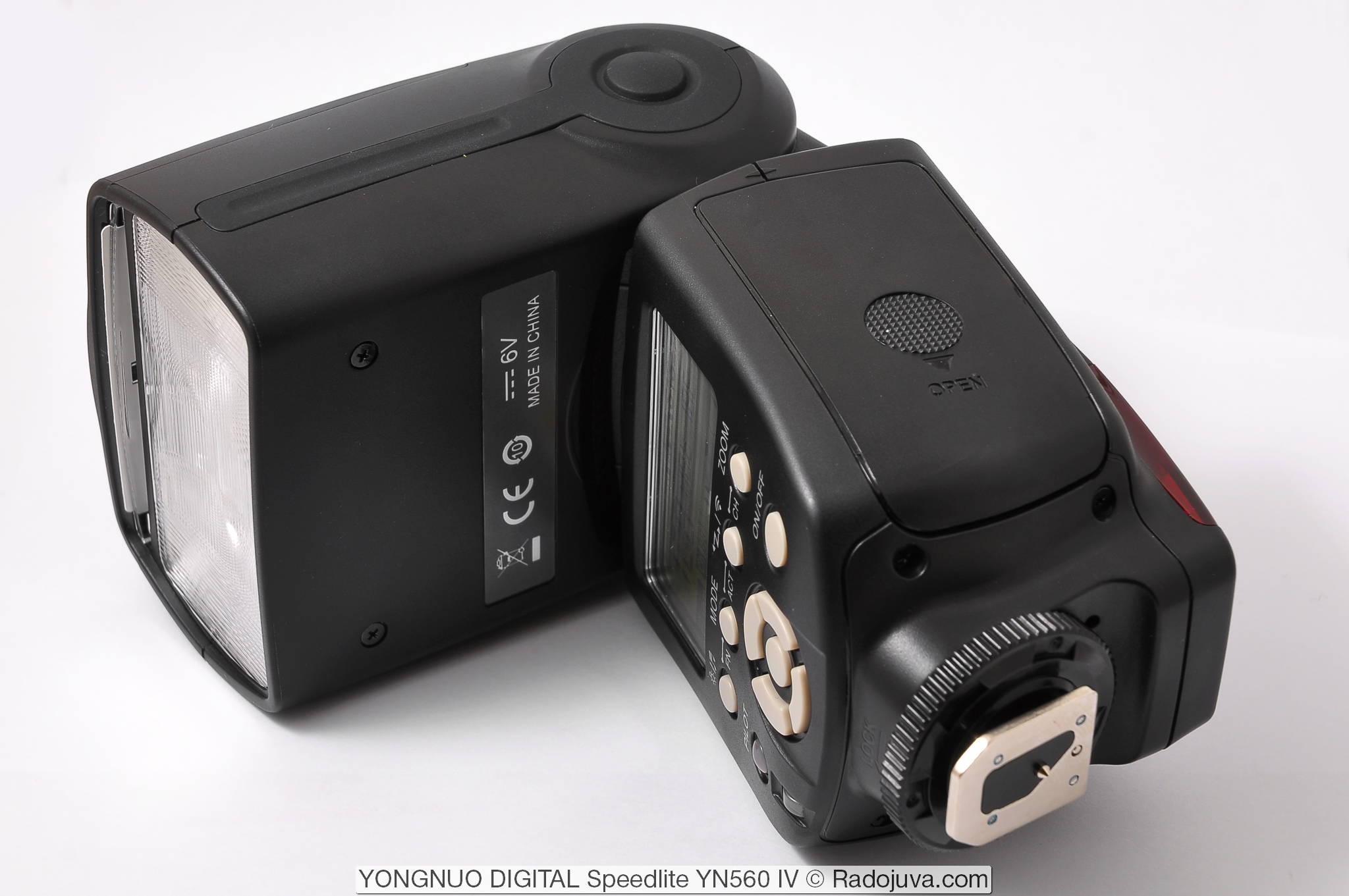
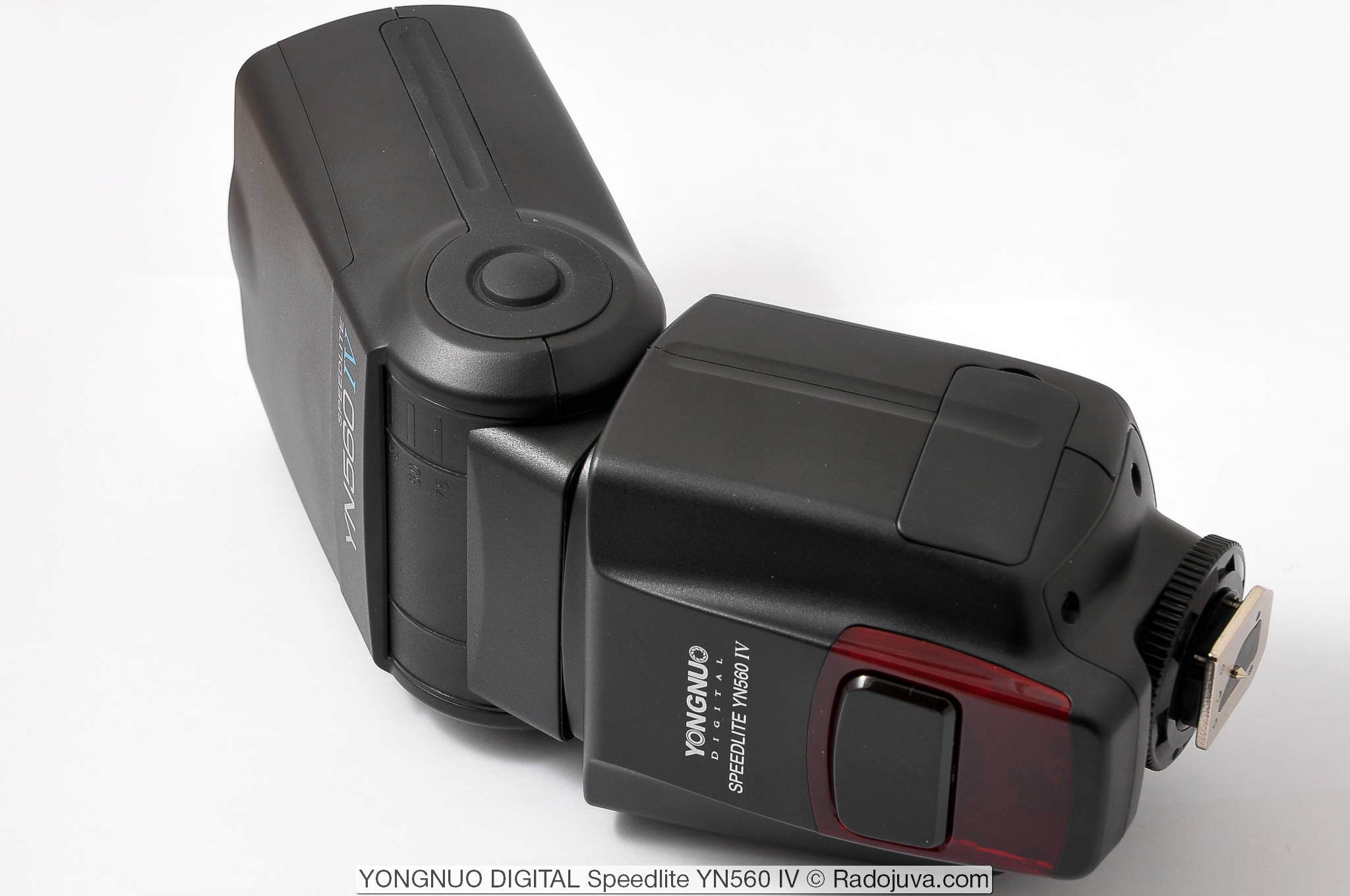
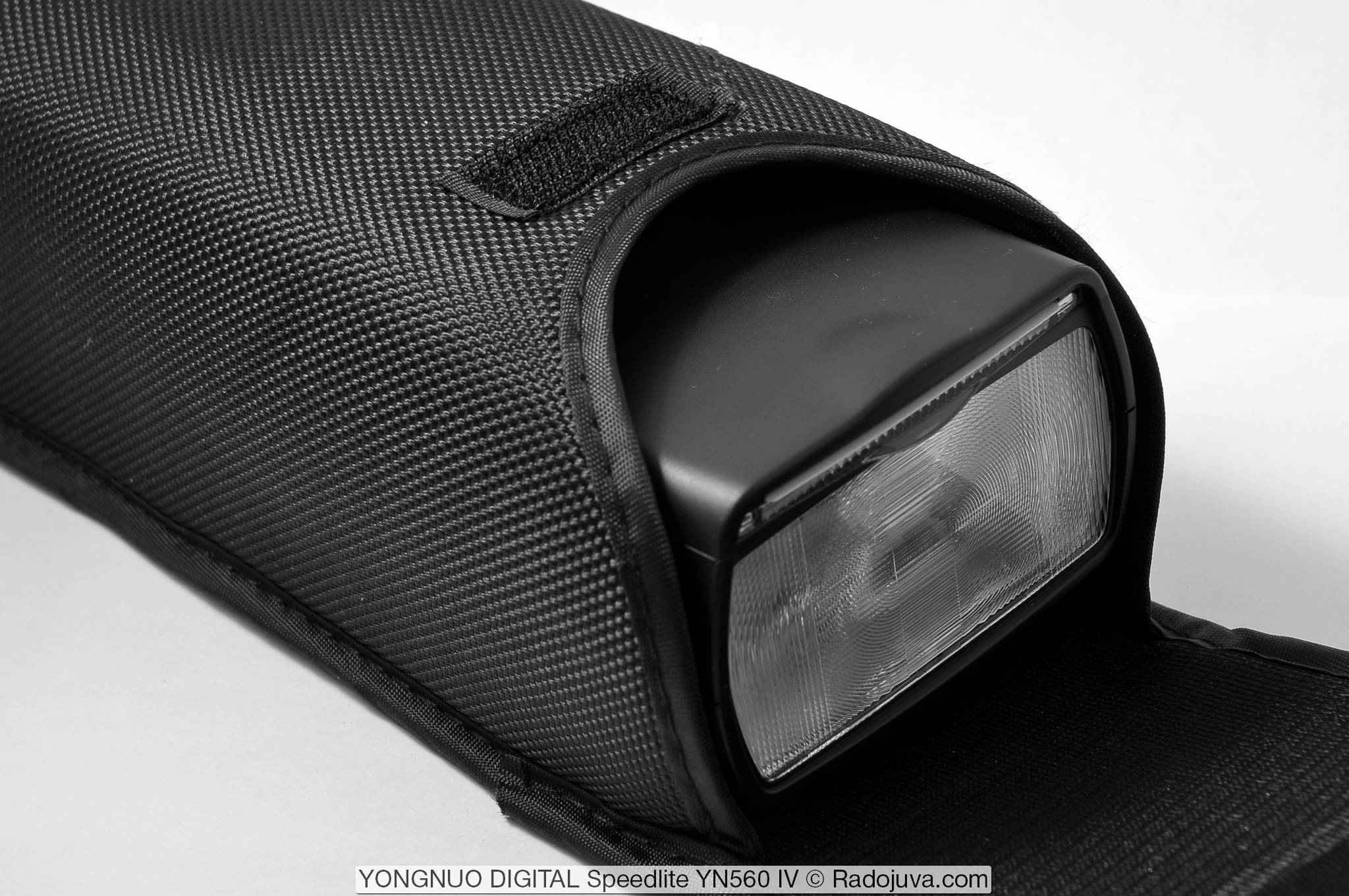
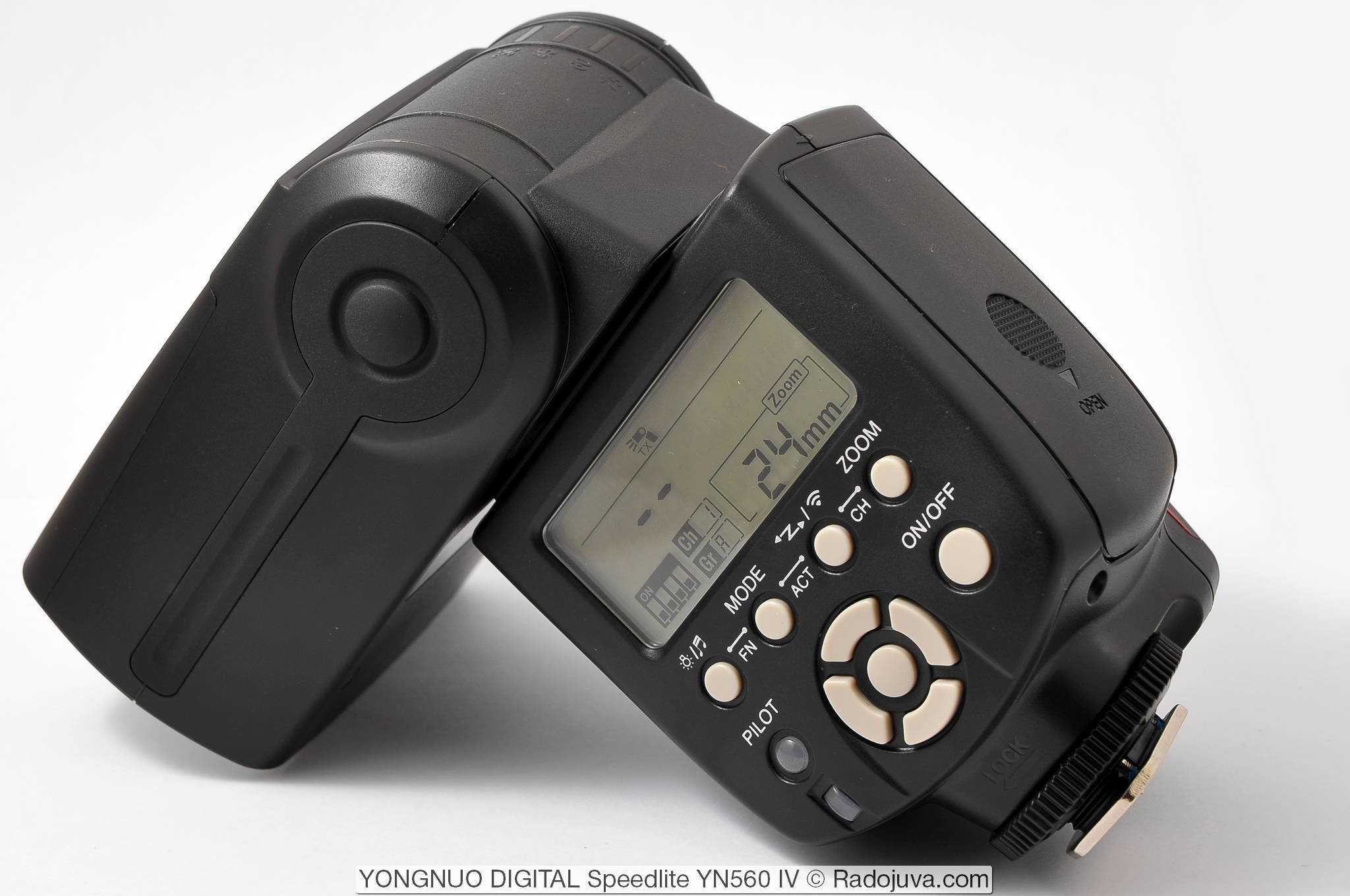

This is my review from Yandex.Market. Examples of my photos here https://vk.com/album53705676_257368987
Advantages: Unpretentiousness, triggering with an "ax" effect when synchronized with YN560-TX, build quality.
Disadvantages: Not too economical operation of the batteries, gaps in case of sinking batteries. Recently I could not change the group on the flash - changing the channel is not a problem.
Commentary: I got a couple of such flashes a year and a half ago and Commander YN560-TX - I'm not overjoyed. A very convenient thing for working on staged photosets (filming cars, concerts, etc.). They are perfectly controlled from the commander, no TTL is needed in this case, when the power must be steered manually and get a stable result under the same conditions. Filmed at a small concert, where I used these flashes on stands with color filters to simulate stage lighting - the result was fire and the whole series was processed very quickly with a minimum of cost. Also, the third flash in the setup for such shots - YN968 - works from the commander in manual mode. The 1/4 power on each of the three flashes at the corners is quite enough to get excellent photos at a minimum ISO 100 and an aperture of 5.6 in a small but very dark room. Batteries really need to be removed from the flash outside of working with it. I did not test impact resistance.
thanks for the comment
Tell me. Is she going to canon? Nowhere is it written for which foooapparat
Gennady “Strobius” Kondratyev spoke well about high-speed synchronization with manual flash in his YouTube video. https://youtu.be/GX5HmoW4_9o?t=9m42s
I have been using a set of two Speedlite YN560 IV flashes and a YN560-TX transmitter for two years now.
I use it intensively, outdoors (for macro) and indoors.
There are no special problems. The truth sometimes wedges the clamping disc, both on flashes and on the transmitter.
Regarding getting used to the location of the batteries. I don’t know, maybe it is different for Nikonists. I didn’t have to get used to it, in the native Canon 430 the location is the same.
For two years, nothing broke, did not loose. Ie done quite hard.
With accumulators that have sat down, there are gaps. I can’t remove the batteries from the flashes and the transmitter (Eneloop is everywhere). I did not notice that they sat down until the flashes were used.
If you have any of the RF-60x and YN560-TX in stock, it is very convenient to make a wireless release "cable" while maintaining the ability to control the flash.
YONGNUO Speedlite YN560 IV Launches RF-60x Synchronizers. When there are not enough two YN560 IVs, I put the native Canon-603 on the RF-430II.
Relating to the disadvantages of only manually setting the power in a non-TTL flash is probably wrong.
Overall very pleased with the system. Inexpensive and quite angry!
Thanks. Also, I did not notice that she was planting Akum off.
Of the manual flashes, some UFO and ancient Porst are quite enough for me. And sometimes even more ancient SEF, if there is a socket within reach. The real advantages of this flash over Porst (without any electronics, screens and YUSB) is a radio synchronizer and, in general, everything.
The built-in flash is enough for someone :)
I can't write anything on the topic, and so, remotely, I've been using Pixel X800 Pro (in China it costs about $ 79 for the Pro version (4 batteries with a charger included) with a built-in synchronizer and about $ 57 without it) for several months now and not I remember that something did not work or fail, and also never (!!!) received underexposed or overexposed frames. I would like to say that lately Chinese flashes have become much prettier and are practically not far behind the original ones, Godox, Pixel and Shanny companies are the best in my opinion, Yongnuo comes next. For information - in China, the YN560iv costs $ 49 along with 4 batteries (2500MaH) with a charger.
If you take on-camera flashes, the Yongs are in the lead here
And I have such a question. Knowing I have meike mk910 and sync kit yn-622n-tx, yn-622n. I’m thinking of taking another flash, and as an extra and a back guard, but I don’t know what to take budget. This type of review or simple with a light trap. He broke his head.
> A clamping disc is used to secure the flash instead of a lever. This reduces the speed and convenience of attaching / detaching the flash to a camera or stand, and can also cause the flash to jam in the hot shoe.
I do not agree, in the end I liked the disc more. At first, I was also happy with the lever latch on the YN968N, then the rubber gasket fell off quickly enough and the connection became unreliable. It’s good that I found it in the photo backpack and not the first time, but somehow put it in place, I doubt that it will be possible to stick it. To each his own, of course.
This already applies to the implementation method in a particular model. But the method itself, you see, is much nicer, faster with a lever.
I did not use this model, but Chinese outbreaks are more likely to please than fail. Buying a branded flash in good condition at this price is simply unrealistic.
Smiled about sb-900. My first flash sb-910 and also survived everyone that followed. I had a chance to buy sb-700 from the original, I thought it would be easier than the 910, but ... of these two originals, I still kept 910 for myself. And she is already 7 years old.
Black flash ... absurd. (
Thank you for the detailed look. Rumbles, clicked, a little hto so detailed analysis, on a daily basis from the bald dosv_du koristuvannya.
An amateur photographer often does not know how valuable a simple external flash like this is. He accordingly directs his torment and torment toward technology and optics, newer and more expensive. But the cheapest and most effective solution to various torments of creativity lies right here.
One manual flash placed somewhere on the table and aimed directly at the ceiling can work wonders. Even without a tripod, umbrella and radio synchronizer. Even with an old camera and the cheapest fifty dollars.
Yes, but a flash with TTL will immediately do a miracle, but on a manual one needs to pick up power, and if it’s not convenient once, then?
Quite possible. Due to the specifics of my work, I do not use TTL flashes. I had an SB-700, but it got stolen last year. I could not adapt to it - all the time it went wrong, no matter how long the exposure adjustment wheel was turned. So I expose everything by sight.
Hello
And such question interests, the auxiliary autofocus beam ... Is it there? And how does it work on 560-4 ??
No, he is not here. It cannot be, since there is only 1 contact for connecting the flash with the camera.
Arkady tell me, is it possible to control the NIKON SB-560 with this flash YN 4-900, if the YONGNUO RF-900 N603 transmitter is installed on the SB-2? Thanks.
I did not understand a bit: does this flash have a TTL in Slave mode?
No
the YN560iv flash does not always turn on immediately, I thought about updating the firmware, but as it turned out specifically for this model, no, maybe someone knows where to find
Hello! I have a problem. I plug the flash into my shoe, the power is on. I go into the flash control settings and select the setting item for the external flash, for example, to set the second curtain sync. But this menu is not displayed for me and says that “an incompatible flash or flash power is disabled”. Canon 60d camera. It is flash compatible. Help me please
There may be problems with the shoe.
If we are talking about YN560 IV, then everything is true. The camera does not see it (the flash has only one contact) and cannot change the settings.
It should be so.
Can you please tell me if there is a compatibility of the size and shape of the flash head with the Canon 580 / 580II serial flash heads (for putting on accessories - diffusers, multipliers, etc.) on the flash head? Thanks.
Help who came across! )
I use YN 560 IV in conjunction with the synchronizer YN 560 TX II. The problem is this: set the channel and group on both devices. Zoom and power settings sync seamlessly. I press the TEST button on the synchronizer, the flash fires flawlessly. But when I take a picture with the camera, the flash fires only for the first time, and then only the indication on the flash is blue and on the synchronizer blinks with each next frame, and the flash pulse does not fire. However, it is worth changing any setting on the sync (zoom or power) the flash fires again with the camera shutter, but also, only for the first time, and then again, only an indication. I changed channels, groups, rummaged through the settings, but didn’t find anything that could fix the problem. I can throw off a video or a gif, who are interested, in telegrams or wherever convenient. I’ve already broken my head, what am I doing wrong and where am I mowing? There is no experience with such a bunch. Previously, I used the flash on a hot shoe and removed it without worries. And then I decided to expand the use of puff a little, and this is such a disaster. I really hope that someone else reads this thread and shares their observations and thoughts. Sync with aliexpress arrived just yesterday. So far, I hope that I'm just a wry-handed man and the whole thing is in the settings. But hopes are melting.
It looks like the batteries have run out of flash)
It works properly in a shoe. So that your comment by.
What does "by" mean?
Your original manner of communication.
Have you tried fresh batteries though?
For radio communication, the flash requires more energy than on the shoe.
Past. Hmm ...
Well, nevertheless, more energy is needed for the puff, and usually the discharge of the batteries is visible as the increasing energy gain time for the puff of the same power.
Past means that the wrong version is yours. And your comment smacks of sarcasm. Didn't want to offend. As a radio engineer, I will tell you that not so much energy is needed to work within a radius of 100 meters, as an example - the operation of your mobile phone in a wi-fi channel, the consumption is minuscule, much less than it takes for one puff in 1% power. Also, I inform you that I changed the batteries. I have batteries, and yes, I use charged ones. And for the sake of completeness, let me remind you that after I change the flash settings from the same synchronizer, it still fires once, and again dulls. And so there can be an infinite number of attempts, that is, I can spit, and on creative filming, just click the synchrome settings for one frame, and each time repeat the manipulations with takes. But in a reportage, this is not convenient. Several people wrote that such a problem occurs. Only for someone the issue was solved by the firmware of the synchronizer, and for someone by replacing the flash board (these are generally miracles, it seems to me). I am trying now to contact the Chinese and try to find a solution with their help. It's not even that it's a pity for the money spent on the flash (in general, it works in a shoe, and it controls others perfectly), it's a matter of sports interest. Will it be possible to return it to full-fledged work, or to continue using only the available functionality.
Yes, now it’s clear. It seems like a real marriage. Maybe something is soldered bad, or maybe the parts are defective.
I suspect that Youngnuo's quality control of finished products tends to zero. Unlike native outbreaks. Here is the corresponding price.
Determined empirically that the problem is in the outbreak. The synchronizer manages other flashes of the same kind and ignites flawlessly. The flash itself in the hot shoe works seamlessly. And from the synchronizer with the release of the camera shutter - the first frame is set on fire, and then only the signal reception indication blinks along with the shutter release, and that's it. I reset the settings, it did not help. I will write in support, maybe they will advise. I asked on the forums, they say to come across this.
Problem solved? Have you tried to reflash? And with another synchronizer (for example 603)?
Enlighten the kettle. There is a flash YONGNUO YN 560 III and synchronizer RF-603. I also want to buy YONGNUO YN 560 IV. Is it possible for the RF-603 synchronizer to set fire to the YN 560 IV, which in turn will set the YN 560 III on fire?
For whom is this folding? RF-603 Introduce In The House Of Sleepers. In me, for example, 2pcs. three and one four. If necessary, put the sleepers on the wine - I put the RF603 on the camera, and if you need to sleep on the cameras, then IV on the camera, and the three on the wine. It’s just necessary, it was all in one channel.
Thank you very much. I did not know that the RF-603 could fire several flashes at once.
And if you put a transmitter on the camera, and in it another transmitter tuned to another channel, you can separately turn off this group (this was necessary once for all the time)
It is quite logical. thanks
Please do not count it as an advertisement, I myself only found a good short description of the "Yongnuo 560xx" system and some features, in particular - compatibility with 622-TX
https://strobius.com.ua/reviews-cat/triggers-reviews-cat/yongnuo-yn560-tx-pervye-vspechatleniya.html
https://strobist.ua/blog/sinhronizatsiya-yongnuo-yn560-tx-yn-622c-tx-yn-622c/
Here, the Chinese have finally combined the 560 and 622 series, releasing the leading radio synchronizer YN-560_TX_PRO.
I did not find information in Russian, but from this http://flashhavoc.com/yongnuo-yn560-tx-pro-transmitter-released/ it turns out that he can control the 560th series (manual), the 622nd and other TTLs (except EX-RT)
Recently came to me: YN560_IV_2018, YN560Li, synchronizers YN560_TX_II, YN560_TX_PRO, RF605, YN622N_II
Over time, I can review how it is 'friends' with each other.
Here in the review it is indicated that the flash in master mode always fires. My flashes (both 560IV and 560Li) can be configured so that they do not fire, but only give a radio signal
I have a YN560LI (4th version only for lithium 18650) fire for 2000 UAH, just a manual gun and with a lever on the mount and with a charge indicator.)
Hello. I have a Canon 100D camera. I want to buy an inexpensive camera flash. Tell me, please, which ones to choose.